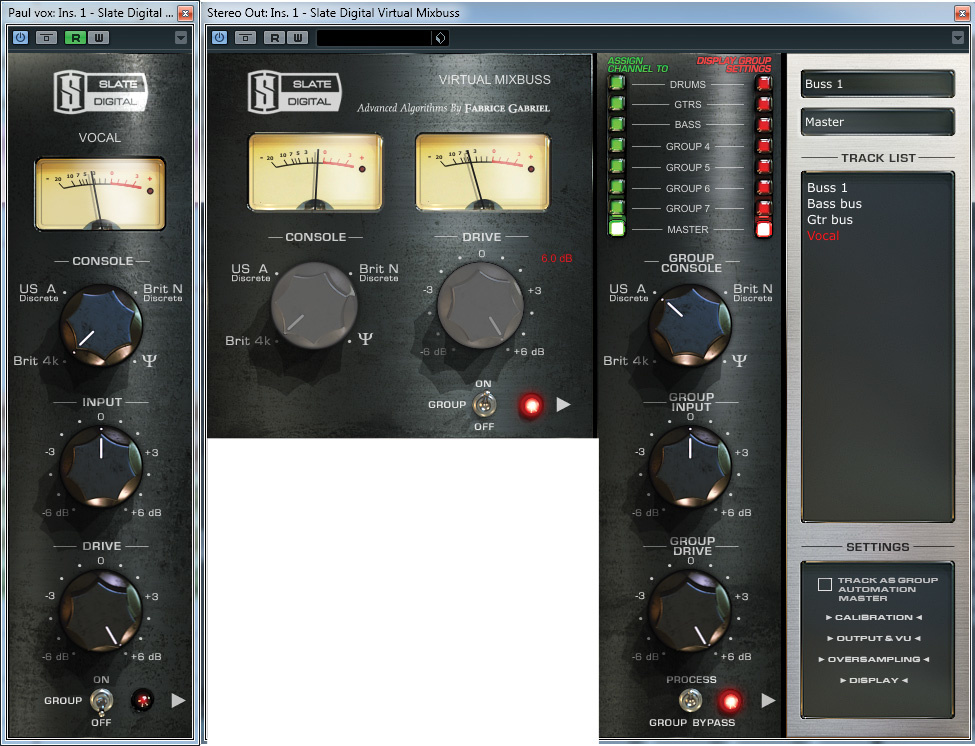
A professional machine with bias and all the correct EQ trickery applied will offer an almost linear response over quite a wide dynamic range, but above a certain level, magnetic saturation starts to set in, and both positive and negative peaks of the waveform become progressively more squashed or compressed.
#HOW TO SET UP SLATE VCC FULL#
Unlike digital systems, where everything stays clean until you hit full scale, an analogue tape recording becomes progressively more non-linear as the magnetic saturation limit of the tape is approached, much in the way that valves also distort gracefully. In practical terms, this means that the repro side of the circuit must have a filter response that is complementary to the actual recorded magnetic flux, not just the simple opposite of the record pre-emphasis EQ. This has to take into account the fact that a replay head functions as an integrating device and so also acts as a kind of equaliser. In addition to the user-tweakable calibration EQ, tape machines also have fixed NAB or CCIR 'pre-emphasis' equalisation that boosts mainly frequencies above 3.5kHz to achieve the best headroom and noise performance across the audio spectrum. For a start, the transfer of audio to tape and back via a pair of magnetic heads doesn't produce a linear frequency response, so EQ has to be applied both while recording and during playback, in order to flatten the response. Once it does, things start to get very complicated. In vintage machines, this path often includes audio transformers which introduce complex phase shifts, saturation effects and frequency-response perturbations, and that's before the signal gets anywhere close to the tape. For a start, the tape signal path involves an analogue input stage and an amplifier section to drive the tape head. This sound is the result of numerous complex, interacting factors. The Sound Of TapeĮach instance of VTM can be assigned to one of eight groups, allowing parameter changes to be applied simultaneously across multiple tracks. I don't think anyone can tell you exactly why analogue tape sounds so 'musical', at least not if you base your reasoning purely on spec sheets and measurements, but there's no denying that terms such as 'warm', 'smooth', 'big' and 'musically involving' sum up the way that many of us feel about the sound. Digital audio, by comparison, still carries the stigma it acquired when it was an emerging and immature technology competing with analogue tape machines - a mature technology that had evolved almost to the point where no further improvement was possible.ĭigital may be way more accurate these days, but many people still prefer the sound of tape. Tape was used to make so many great records over a period of so many decades that we have come to associate the sound of these records with the way recorded music should sound. And that begs the question: if tape machines are so inherently imperfect, why do we like the way they sound? The audio path in a tape machine is surprisingly complex, and sophisticated though the later tape recorder designs were, they still suffered compromises and technical limitations that gave them a distinctive sound. So why so much fuss about modelling a tape recorder? Surely a bit of distortion, a touch of compression and some EQ would do the trick? Well, no. VTM turned out to be Fabrice's greatest challenge so far, and we're told it took around a year of optimising, listening and tweaking to get it to the point where they were happy to allow it out to the world.

Apparently, Steven told Slate Digital's Chief Technology Officer Fabrice Gabriel that unless the end result was indistinguishable from the real thing, he wasn't prepared to release it at all.

Slate sought out two particularly good-sounding tape machines to base their emulation on: NRG Recording's 16-track, two-inch Studer A827 machine and Howie Weinberg's two-track Studer A80 RC half-inch mastering deck.

In fact, Steven Slate tells us that their Virtual Tape Machines is the most complex plug-in they've ever coded. Slate Digital's VTM is the most detailed attempt yet to capture these in digital form.įew companies are brave enough to try to model the behaviour of a professional analogue tape recorder in software. The sound of magnetic tape stems from a hugely complex set of interacting factors.


 0 kommentar(er)
0 kommentar(er)
